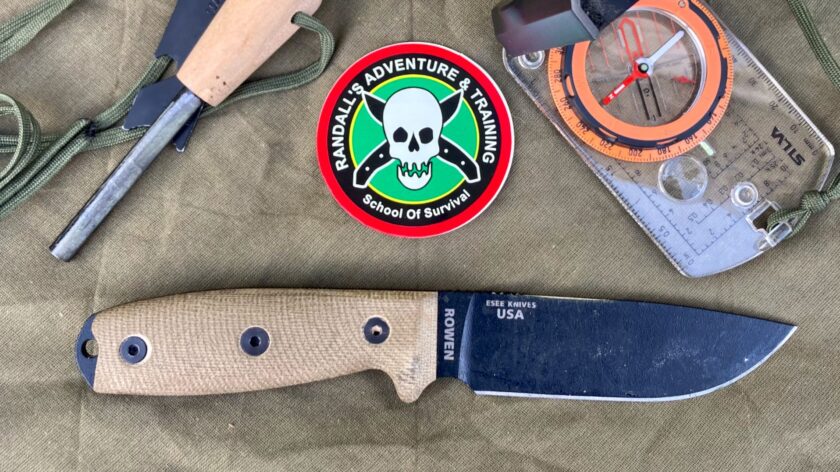“This 3-day class is an aggressive immersion into the challenges of surviving with minimal gear in a field setting. THIS IS NOT A BUSHCRAFT CLASS!” “Significant stressors are placed upon the student in the forms of hunger, physical exertion, thirst, lack of gear, personal discomfort, and sleep deprivation as a means to simulate a 72 hour survival scenario.” “BE WARNED: THIS IS NOT AN EASY CLASS!” These warnings were all present in the literature for the Randall’s Adventure Training Field Survival Course.
This article contains affiliate links.
Full Disclosure: I was given free tuition to this course. This is not because of this blog, but because of my volunteer affiliation with a Search & Rescue Team. This review was in no way coordinated with Randall’s Adventure Training. Additionally, I receive no financial kickbacks or incentives whatsoever to write this review.
I attended the Randall’s Adventure Training Field Survival Course on March 24-26 in Gallant, AL. The Field Survival Course is Randall’s Adventure Training’s most extreme course. I didn’t fully appreciate what I was getting into when I signed up. This article will attempt to clue you in – and challenge you to take it – without giving away all the secrets.
Extra Content
There is some extra content from this class. The following video was taken by a fellow student. Jason Salyer filmed much of the class for Survival Dispatch Youtube channel. This offers some really good visuals. You may catch a glimpse of yours truly in there.
During this class Shane, one of the cadre, went through as a student. Him, Patrick, and Jason did an episode of the ESEE/RAT Pack Podcast with an AAR of the class.
Randall’s Adventure Training Field Survival Course
The basic run-of-show is as follows. The class runs from 05:30 on Friday morning until Sunday afternoon. Friday is mostly filled with classes. We received a class covering a survival overview, followed by an excellent class on land navigation. We went outside to demonstrate and practice some land nav skills. After that we headed into the woods. There we were given classes on building shelter and fire. Again, there was plenty of demonstration and practical application.
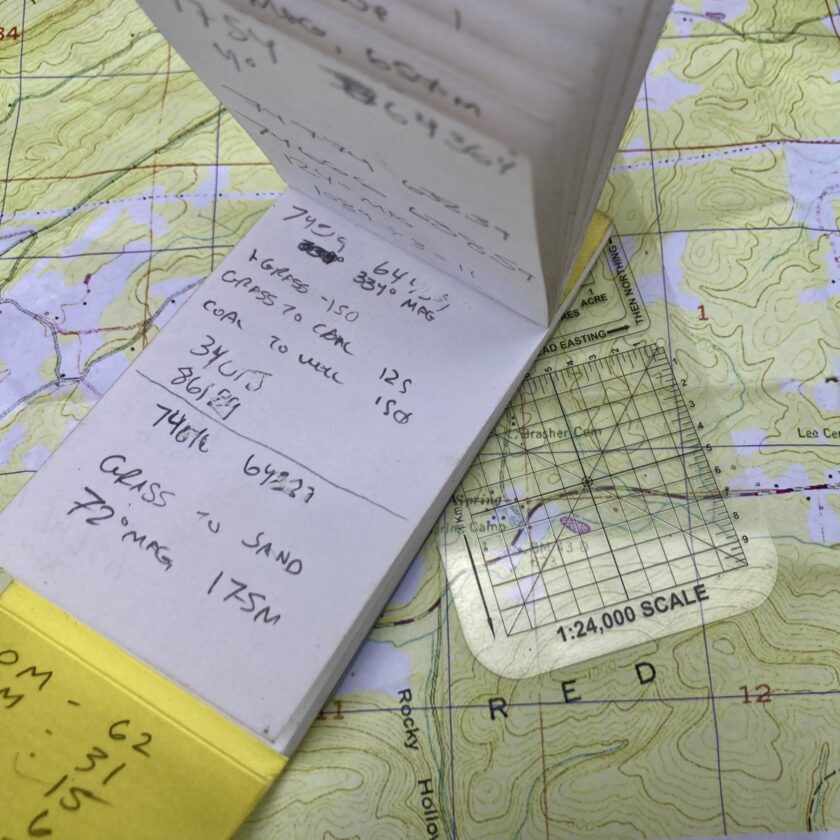
Friday afternoon we headed back to the classroom and that’s where things got interesting. After getting our heart rates up a bit, the class was divided into two teams and brought back to the classroom. Here we were given coordinates for the land navigation course. After being given some additional team gear (probably a couple hundred pounds of it in total) we were off to the races.
Once we had finished the land nav course the night wasn’t over. There were some additional training evolutions throughout the night. Some required raw physicality. Others required a high degree of creativity. All required 100% participation and effort. After a little down time (and I do mean a little) the cycle of classroom training during daylight hours and challenges during darkness repeated itself. On Saturday afternoon we received a class on processing game and killed and cooked three chickens, before diving into nighttime challenges.
Sunday morning saw us doing a short class and a final exercise. The course concluded early Sunday afternoon with graduation, an Honor Grad award, and we were issued our class knives.
Difficulty
Randall’s Adventure Training makes clear that the Field Survival Course is the most difficult in their curriculum. I have little doubt this is true. So what makes this course so difficult?
Sleep deprivation: There just isn’t much time to sleep in this class. We were constantly in class or on the move for the first 24 hours. After a couple hours of downtime we were on the move for about another 24. This adds a layer of difficulty and fog over everything. Lack of sleep can make a simple task, like plotting a grid and determining an azimuth, really difficult.
Caloric restriction: I thought hunger would be a much bigger problem than it actually was. I didn’t really experience hunger until Sunday morning. The lack of calories, like sleep deprivation, added another layer of complexity, especially when couple with the unrelenting physical demands. While the instructors did give us a little food it was very little, sporadic, and infrequent.
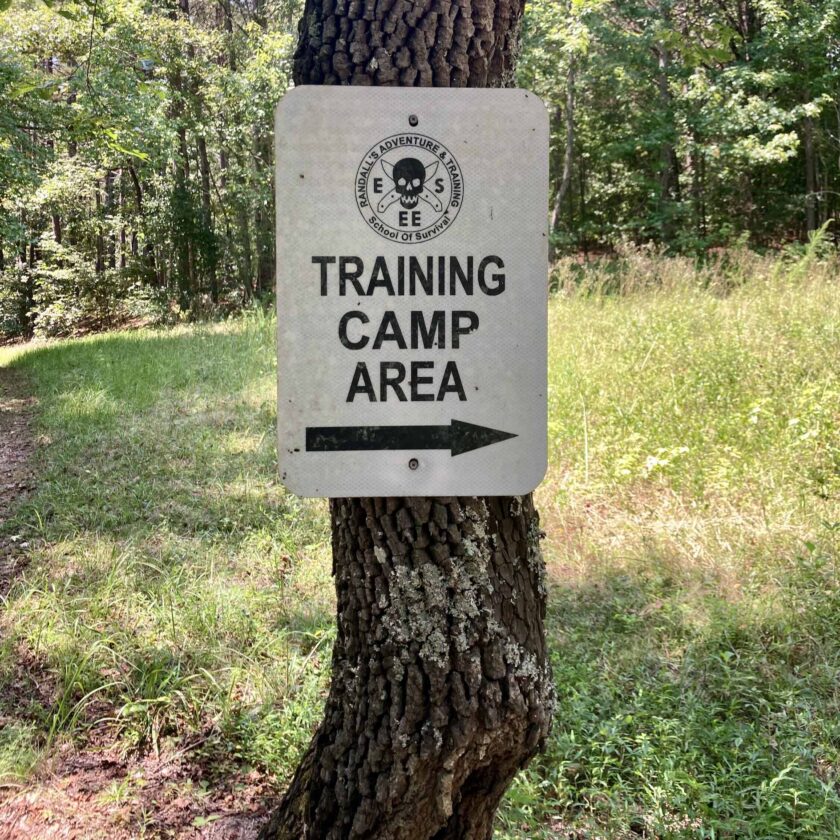
Physical demands: The physical demands in the course were not insignificant. We were constantly on the move during the training evolutions, over rough terrain, shooting straight-line azimuths through brush, woods, whatever. Teams were also tasked with carrying substantial amounts of weight. I won’t ruin the surprise for you, but if you’re expecting to run through this course with the clothes on your back, you’ve got another thing coming. There was also a surprising amount of physical training which was often used as motivation. Again, I’ll leave that to your imagination.
Uncertainty & stress: There was a lot of uncertainty to this class, which added stress. As students we had little idea what to expect around each corner. This contributed to the overall difficulty in an unquantifiable way. Another element of uncertainty involved the time. Since no one had a watch we had little idea what time it was, when we’d started something, or when it would end.
Gear
The gear list for this course was pretty sparse, so there won’t be a whole lot to talk about here. “Fixed blade knife with sheath, ferrocerium rod, clothing appropriate for the season, hiking boots (broken in), water container (hydration packs are acceptable), cap or bandana, mirrored baseplate compass, pace count beads (optional).” I’ll go over what I used for each of these items.
Knife & Ferro Rod
My fixed blade knife for the class was an ESEE 4. This is a really solid knife and one of the perennial favorites of bushcrafters and most of the people on my SAR team. And since ESEE Knives and Randall’s Adventure Training are owned by the same person, it felt right. This knife took some serious abuse during the class. I batonned firewood, chopped down saplings, and cut fine projects like a figure-4 deadfall. The knife held an edge and didn’t blister my hands.
My ferro rod was an überleben 3/8″ ferro rod. This long, burly ferro rod worked exceptionally well. It throws a ton of sparks without a ton of effort. I made sure to also bring the included striker. Getting rid of the included 550 cord, I added a much longer piece for use as a dummy cord. I kept this item secured to my belt at all times – a practice I highly recommend in stressful environments like this. After using it a lot it still has a lot of use left in it.
Compass
I took a Silva Ranger 2.0 as my baseplate compass. I have used the Ranger for years and trust it. It is a proven compass and worked wonderfully in the class. I skipped pace count beads and didn’t miss them. My water container was my single-walled, stainless steel, 32-ounce water bottle from Self Reliance Outfitters. I ended up using this bottle quite a bit to warm water and to boil half a dozen eggs at one go.
Other Gear
I used a large, Chinook Med Cravat as a bandanna. It turned out incredibly useful for keeping the sun off my neck. My clothing was pretty standard stuff – old, OD BDU pants, a tech t-shirt, Merino wool socks, and worn out Salomon boots were my normal wear (I threw away the boots as I was leaving the classroom). A Merino wool base layer shirt was my warming layer, and I brought a North Face hard shell coat.
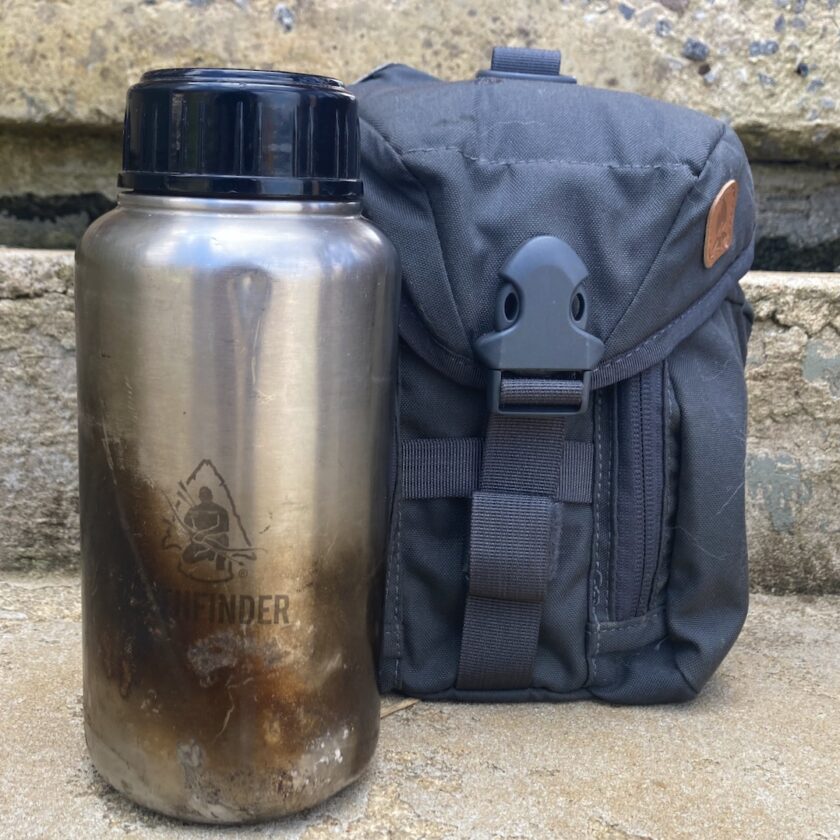
With instructor permission I carried my water bottle in a Helikon Tek Essential Kit Bag (reviewed here). Carrying my water bottle would have been a huge pain, so I was tremendously grateful for this concession. The bag worked very well with one exception. The unpadded strap had a tendency to creep above the neckline of the tee-shirt. This rubbed my neck raw and I will be looking for a pad for the shoulder strap.
We should also talk about what was not allowed, “No other personal gear (including watches, cameras and phones) are allowed during the course.” Anything else was considered contraband. Being unable to tell time, check texts, or take photos created some additional mild friction. There were some really cool photo opportunities in the class, but the lack of a cell phone explains the dearth of pics here. Other than that it was surprisingly easy to live without a phone. This policy also caused some caffeine and nicotine withdrawals for some students.
Lessons Learned
So what did I learn from this class? Honestly, I didn’t learn a whole lot. The classes were fairly basic. That’s not to say they weren’t valuable, but we weren’t getting into any advanced bushcraft or anything like that. The classes covered basics, and most of the class knew most of that info when they arrived. But there were some takeaways.
To be good at something, do it. A lot.
This was very true with land navigation. Navigating with a map and compass is a dying skill. This course heavily reinforced that skill. I saw my skills go from decent back to close to my peak ability in just a couple of days, thanks to a lot of opportunities to land nav. The same goes for almost any other skill – if you want to get good, get trained, then do it, a whole lot.
Hunger is overrated.
Prior to starting the class I thought hunger was going to be a much bigger deal than it was. Surprisingly, I actually wasn’t all that hungry most of the time. Except for Sunday morning, with graduation imminent, hunger was essentially a non-issue. I was also able to perform at a very high level during all this time, even with almost no calorie intake. This is a great takeaway for survival/preparedness situations: you can get by on a lot less than you think you need.
Addiction slows you down.
Dudes with caffeine and nicotine headaches were hurting, on top of the pain inflicted by the course. The rest of us had one less problem. Think about that if you have an addiction. Think about what that means for your survival in any emergency.
Physically fit people survive more, longer.
The instructors constantly reminded us of this. Physical fitness is an incredible asset. It makes you stronger, faster, and harder to kill. Get physically fit if you aren’t already.
Survival Skills Lessons Learned
There were also two huge survival takeaways that I want to share. We had to build a lot of fires and a lot of shelters in the class. I learned a heck of a lot about building fires and shelters in adverse conditions with minimal equipment. Here are my survival skills lessons learned from the Randall’s Adventure Training Field Survival Course.
Fire: Fire is massively easier to build when you have some dry tinder. You will do yourself an inestimable favor if you keep some dry tinder on you. I really like cotton balls and Vaseline, a opinion seconded by Patrick at the class. However, you also need to be prepared for times when you don’t have dry tinder. This means starting fires under sub-optimal conditions. We had to start a lot of fires, which really drove this point home.
Shelter: If you are tired, it’s wet, and dark, building a shelter from natural materials is going to be really difficult. If you don’t have a flashlight or (preferably) a headlamp, it’s probably not going to happen. Making a shelter is easier – and it’s hard to overstate how much easier – if you have a tarp. I discussed this in my shelter article and this class really drove that home. If at all possible you should have a shelter kit that includes a tarp, some cordage, and a stake or two. That being said, you should still know how to build a lean-to or debris shelter without the aid of a tarp, just in case.
Saws: If you do find yourself building a shelter from natural materials (or even in conjunction with manmade materials), a saw is worth its weight in gold. The 7.5″ Bahco Laplander will be going into my pack and staying there.
Closing Thoughts
We’ve covered the hardship portion of the course. What was so great about a class where you are starved, sleep deprived, can’t have your phone, and can’t indulge your addictions? Why would you go to the woods to be uncomfortable? Why come home with legs scratched to pieces, fire ant bites, blistered feet, and a hoarse voice?
As I talked about a long time ago in my article entitled Prepare Your Mind, classes like this are a great way to become more resilient. Attending classes like this will give you the reserve to be able to thrive in chaos. You will build mental and emotional toughness that you won’t get from sitting at home, constantly adjusting the thermostat, numbing yourself with TV, eating everything your heart desires, and feeding your addictions to sugar, caffeine, alcohol, and tobacco.
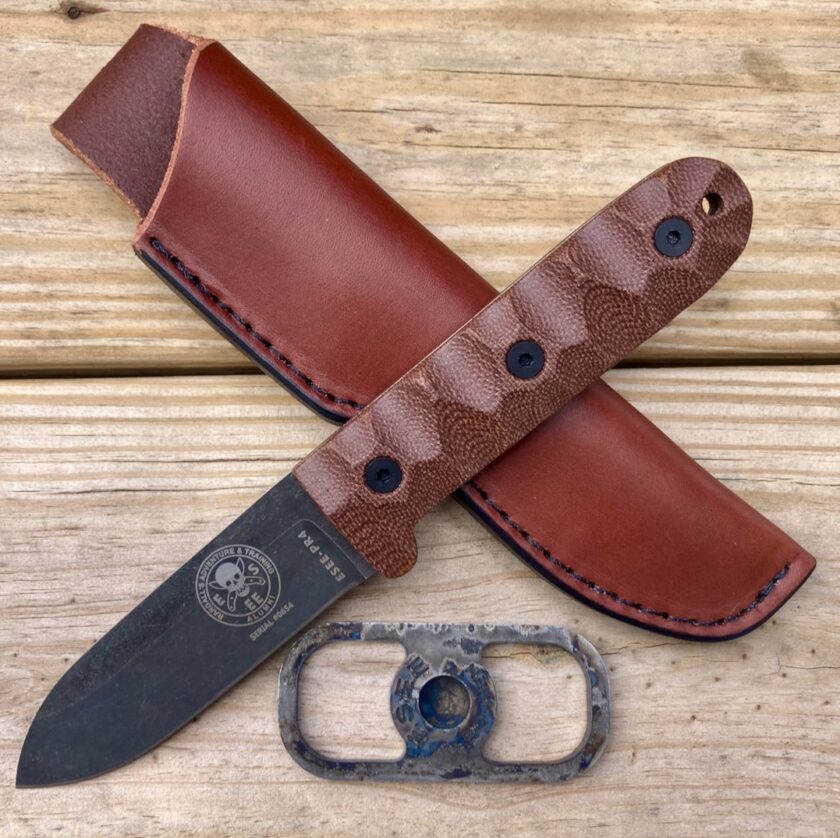
I relearned this lesson during the Field Survival Course. No one likes being the rain, doing a tedious task, at 3 in the morning. But if you’re there, do your best to be cheerful and get the job done to the best of your ability. I find that checking with others and asking, “how you doing? You ok?” gives me a lot of strength. Though it’s cliche, try to “embrace the suck.” This will truly teach you to be comfortable being uncomfortable, and it will help you be an asset when the chips are down.
Skills Learned and Re-Learned
You won’t learn a ton of ground-breaking skills from Randall’s Adventure Training’s Field Survival Course. As stated, the class covers the basics of fire, shelter, and land navigation. You will have every opportunity to practice these skills under difficult conditions including exhaustion and the worst weather Alabama can throw at you.
You will also learn a lot about yourself. My class started with 13 students and graduated 9. The vast majority of you reading this will not attempt this class. Of those of you who do, some would probably quit prior to its conclusion. But those few of you that do it and see it through will gain something more valuable than anything I can describe here. But you’ll have to find out for yourself. Good luck.
